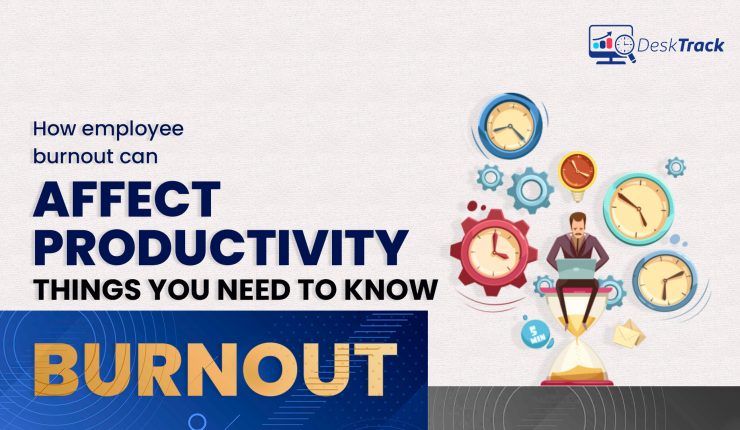
Experiencing burnout in the workplace is nothing new. Before, it was expected. As a leader, you must, nevertheless, admit to its presence. Your most productive workers have suddenly slowed down. And as time passes, they’re absorbed into the ailment. They succumb to a circumstance in which they cannot work because they lack motivation. Alternatively, they are unable to do a simple activity.
If you’ve ever been in a scenario like this, you’re certainly not alone. Symptoms of an industry-wide pandemic include a loss of productivity, composure, and attention.
What is Employee Burnout?
Employee burnout is a state of physical, emotional, and mental exhaustion caused by excessive and prolonged stress. It occurs when someone experiences long-term, unresolved conflict at work. Employee burnout can lead to absenteeism, low productivity, and high turnover. Anxiety and exhaustion may lead to this condition, which is a mental illness. Anxiety, irritation, and tiredness are all signs of burnout. In addition to these symptoms above, burnout may cause:
- Itching to lash out
- Cynicism
- Depression
- Exhaustion
- Anger
- Frustration with Work
How Employee Burnout is Affecting the Workplace Productivity?
Burnout is very harmful & it impacts both personal & professional levels. For the organization, it reduces the employee productivity, motivation, zeal to work, etc. It drains the productivity levels of employees which takes employees to diseases like hypertension, high blood pressure, etc.
It’s not just a tiny problem that individuals need to find out how to deal with employee burnout in the workplace; it’s a serious fact that may have far-reaching repercussions throughout your whole life. The following are some of how people who are experiencing burnout or stress at work are impacted:
Concerns about employees’ physical well-being
- Overwhelming pressure
- Fatigue
- A higher risk of cardiovascular disease
- Increased risk for hypertension
- Type 2 diabetes
- There is a greater chance of respiratory problems
- A higher risk of dying before the age of 45
Concerns about mental health
- Depression
- Anger
- Irritability
- Anxiety
- Mental health issues, such as medication or hospitalization, are more likely.
Consequences for employees’ life
- Addiction to alcohol or other substances
- Separation from close relatives and friends
- Financial irresponsibility.
- Angry feelings against one’s own family.
- The inability to carry out one’s duties.
- Consequences for your professional career
These all the cause impact employee performance at the workplace. Every employee is important & part of the organization’s growth. In terms of productivity, employee burnout is very harmful to any business.
How to Manage/Prevent Employee Burnout?
When it comes to your personal and professional life, work stress may have a devastating effect. When you’re dealing with concerns brought on by work stress, you need to act quickly to avoid more damage. Need to manage stress & prevent employee burnout.
Stress may be caused by various external sources, like worries about money, crime, or politics. However, managers can take steps to alleviate their workers’ stress. Managers may make some efforts for employees success. Managers may make the following steps to assist in managing employee burnout.
Organize Walking Conferences
Encourage staff to re-energize themselves by adopting walking meetings, which allow them to leave the workplace and get some exercise. Smaller groups benefit most from these gatherings. Walking meetings may help alleviate tension, but they must also be productive like any other meeting.
Encourage a work-life balance
Managers must model a positive work/life balance for their employees. Managers must also make time for fitness, family, and self-care in their schedules. This policy may aid an organization’s efforts to promote a healthy work-life balance. Shut down early in the lead-up to the holidays, for example, to stress the value of family time. Alternatively, you might provide a variety of scheduling options to meet your customers’ needs.
Keep an eye on your workload and schedule
Leaders must guarantee that their personnel isn’t overworked for lengthy periods. Staff can’t keep up with enormous workloads and rigorous schedules, even if workloads surge sometimes. If a manager keeps track of an employee’s travel plans, they may give the employee a week off to unwind. You can make use of a employee time tracker for tracking.
Employees should be encouraged to make use of their vacation time
There are various methods in which managers might urge their workers to use their paid time off. In the first place, run a vacation time report to ensure that workers aren’t running out of time or wasting it. Also, urge your colleagues to take a vacation verbally and create a work environment that welcomes, rather than resents, their time away from the office.
Work from home options should be available
Managers may assist remove the stigma of working from home and ensure that the policy is applied equally by making it a standard practice. This saves workers money and time, but it also shows that the company has faith in them. Working from home may also alleviate the burden of juggling medical appointments or coordinating care for working parents or caregivers.
Prioritize the Wellness of the Workplace
Stress may be alleviated in the office by providing workers with a place to disconnect, meditate, pray, or rest for a few minutes. It doesn’t take a lot of money to make the workplace a more pleasant place to work, such as new chairs, plants, or artwork. Supporting workers to take a mental health day at times of high stress or high job volume helps counteract worries regarding perception.
Make Management Training Mandatory
Managers may have a significant impact on staff satisfaction and retention. Stressed employees are more likely to leave their jobs if their bosses are underprepared for the job. To effectively teach and develop their people, they must be adequately trained. Organizations must ensure that supervisors have the proper tools and abilities to manage their employees, including suitable feedback methods, goal setting, communication skills, recognition, and work assignments.
Plan Your Future Career
Helping your workers learn new skills may help them adapt to a rapidly changing market and increase their chances of success, both inside and outside the organization. Employees may rise to the occasion if they are encouraged to perceive complex events as a challenge rather than a threat. Managers may guarantee that their staff knows what to anticipate and increase their motivation by defining specific objectives.
Do your best to communicate openly.
Withholding information and communicating less might lead to an increase in tension among employees. Communication with workers should be open and transparent, so they know what is expected of them and how their performance compares to its objectives.
Welcome Your Employees’ Suggestions
Workers have a plethora of information and ideas to share, but managers must be receptive to these contributions. Management should aggressively seek input on how to enhance productivity, balance workloads, cooperate as a team, and complete tasks better.
Conclusion
The professional employee-manager connection may be a cornerstone for a successful business, promoting cooperation, offering career progression, and ideally decreasing workplace stress rather than creating it.
It’s not just a tiny problem that individuals need to find out how to deal with in the workplace; it’s a serious one to the sobering fact that may have far-reaching repercussions throughout your whole life. You can even use employee monitoring software for tracking.




